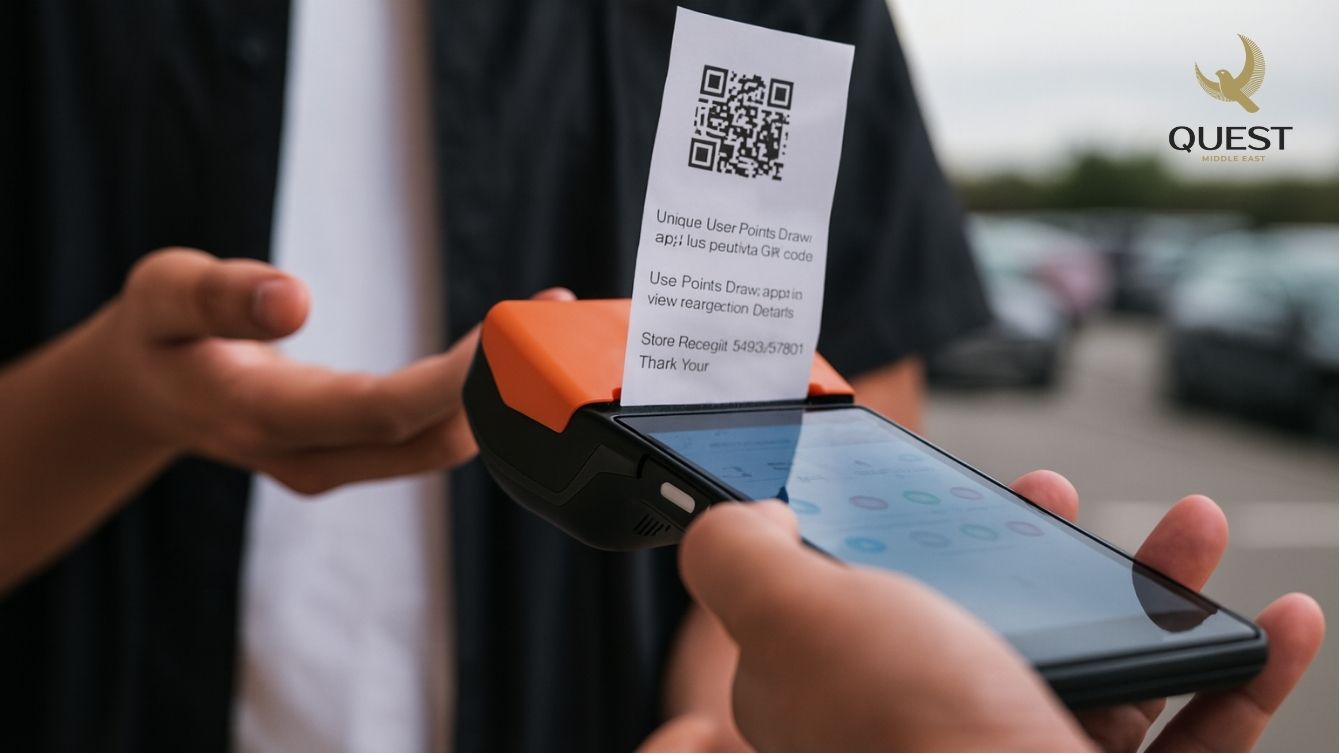We are driving towards a world where smart mobility, parking management systems are transforming how operators and customers experience parking. Automated systems with ANPR (Automatic Number Plate Recognition) barriers, tap-and-go payments, QR code wallets, and exit kiosks have become the gold standard for seamless, 24/7 operation. These systems are fast, convenient, and reduce the need for human intervention.
However, not every parking facility operates under the same requirements. Some clients need a more hands-on approach to parking payment collection. This is where portable payment devices—like Sunmi handheld terminals—become an important part of a parking operator’s toolkit.
What Are Portable Payment Devices?
Portable payment devices are handheld terminals designed to process payments on the go. Unlike fixed kiosks or barrier-based payment points, these devices allow attendants or staff members to collect payments directly from customers at any point in the parking lot.
A portable payment device combines the functionality of:
- A card reader (for tap, chip, or swipe transactions)
- A QR scanner (for Apple Pay, Google Pay, Samsung Wallet, etc.)
- Receipt printing capabilities (so customers walk away with proof of payment)
- A wireless connection to the central parking management system
They are compact, easy to carry, and capable of handling payments anywhere in the facility—making them an ideal solution for scenarios where manual interaction is required.
It also acts as a tool to make fee collection a lot faster and smoother for manned parking lots.
Why Do Clients Still Require Portable Devices?
While fully automated parking systems are the preference for most operators due to efficiency and reduced staffing costs, certain facilities require manual payment collection as an added layer of service. This can be due to:
- Customer Demographics – Facilities with elderly visitors, tourists, or people less comfortable with kiosks may need attendants to help with payment.
- Special Events – Large gatherings, concerts, or conferences often require quick, on-the-go fee collection outside regular kiosks.
- Temporary Parking Sites – Pop-up lots, outdoor events, or seasonal overflow areas may not justify permanent kiosks but still need payment tracking.
- Premium Services – Valet parking or high-end facilities may prefer a personalized payment experience handled directly by staff.
Advantages of Portable Payment Devices in Parking
1. Flexibility and Mobility
Portable payment devices allow staff to move freely across the parking facility and collect payments wherever customers are located. This eliminates bottlenecks at kiosks and ensures smooth traffic flow during busy hours.
2. Multiple Payment Options
Just like fixed kiosks, handheld terminals accept a wide range of payments—credit/debit cards, NFC wallets, and QR-based payments. Customers get the same convenience of digital payment, but with the assistance of an attendant.
3. Receipt Printing On the Spot
One of the biggest advantages is instant receipt printing. Whether customers require receipts for reimbursement, company expense claims, or simply for records, the handheld device prints it immediately, avoiding the need to go back to a kiosk.
4. Integration With Parking Management Systems
These devices are not standalone. They connect to the centralized parking software, ensuring all transactions are logged, reports are generated, and operators maintain complete oversight of revenue collection.
5. Reduced Queues and Faster Service
In scenarios where cars are exiting at the same time, portable payment devices allow attendants to walk up to vehicles, process payments on the spot, and reduce congestion at barriers.
6. Backup During System Downtime
In the rare event of a kiosk malfunction or network issue, handheld devices provide a reliable backup to continue collecting payments without disrupting operations.
Balancing Automation with Personalization
A modern parking management system thrives on automation, efficiency, and 24/7 accessibility. Features like ANPR barriers, parking guidance, self-service kiosks, and digital wallets have made parking almost frictionless.
Yet, portable payment devices bring a human touch and operational flexibility that technology alone cannot provide. They complement the automated infrastructure, ensuring that facilities can serve diverse customer needs while maintaining revenue control.
For clients who require manual collection alongside automation, handheld payment terminals provide the perfect middle ground—offering convenience for customers, control for operators, and adaptability for unique scenarios.
